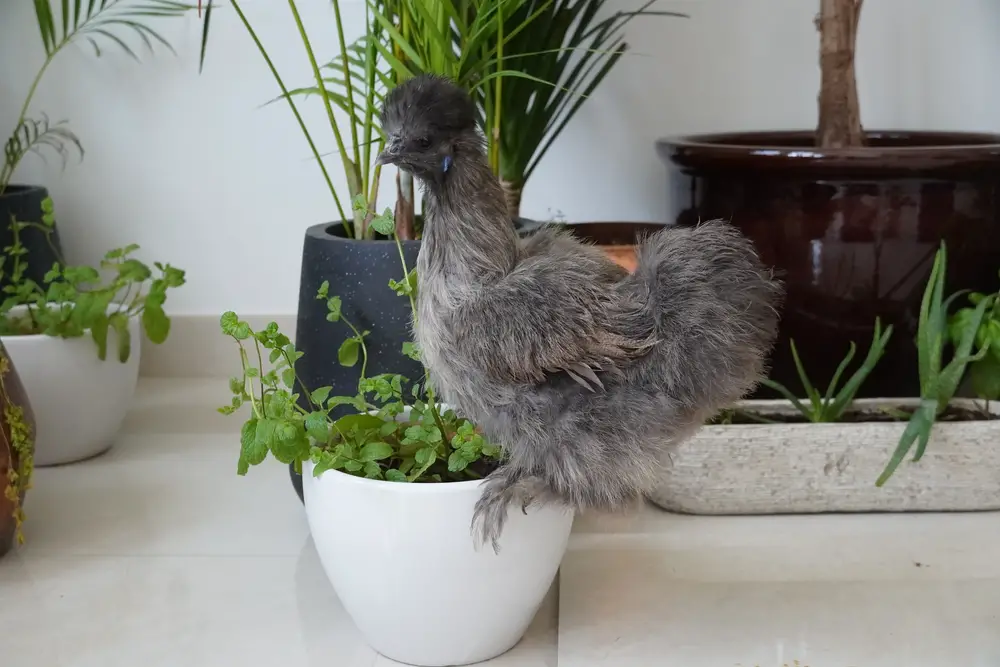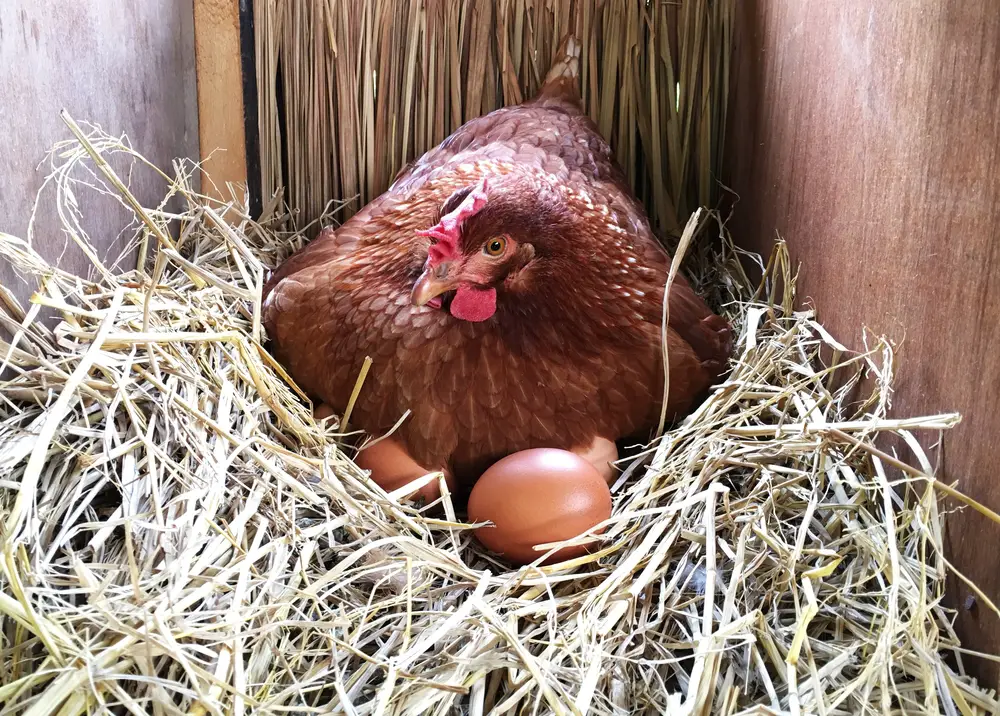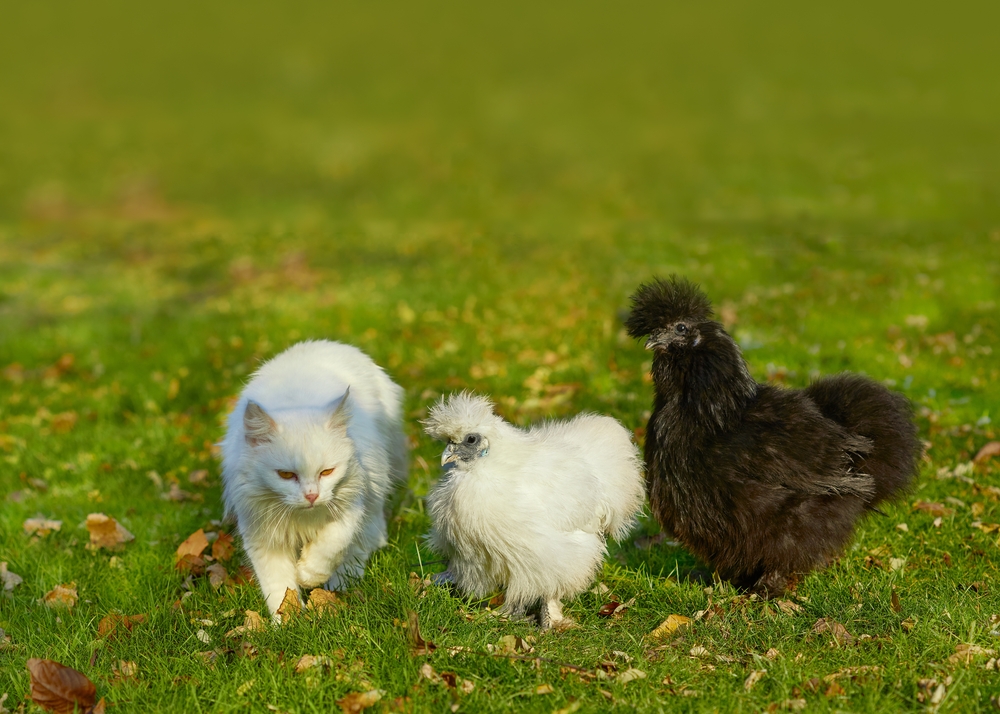Miniature or bantam chickens are tiny and quieter egg-laying chickens. These birds can be fun to keep, generally get along well with young children and are cheaper to raise than conventional chickens.
Did you know miniature chickens exist and they also lay eggs? Also known as bantams, miniature chickens are a great option for backyard chicken keepers.
If you need fresh chicken eggs but want to keep your chickens in a shorter coop while keeping the mess and noise to a minimum, miniature chickens might be a good choice for you.
But before adding them to your flock, read on to learn everything you need to know.
Table of Contents
What Is a Miniature Chicken?
A miniature chicken is a bantam chicken. Miniature chickens are about a quarter to two-thirds the average size of a regular chicken.

Bantams are named after the town of Bantam in Java where these tiny birds are said to have come from. The name bantam is used to refer to all miniature chickens, just like the word toy refers to tiny dogs. This means that the word bantam does not refer to just one chicken breed.
Since the term bantam refers to size, a bantam Buff Brahma is basically a miniature Buff Brahma. Similarly, a cochin Bantam is a miniature version of the cochin breed.
However, miniature chickens weren’t originally known as bantams. The name bantam is used because they hail from the previous city of Bantam in Indonesia.
So when looking for small chickens, you should search for bantam chickens. Bantams are simply a small size variation of standard chicken breeds.
How Big Do Miniature Chickens Get?
Fully grown miniature or bantam chickens weigh about 1 to 1.5 pounds. Some breeds may be larger than this because of their fluffy feathers.
Standard Chicken Breeds with Miniature Versions
Not all standard chicken breeds have a miniature or small size version. Likewise, not all bantam chickens have a bigger doppelgänger.
Some standard breeds that have a miniature version include:
- Buff Orpington
- Buff Brahma Bantams
- Easter Egger
- Barred Plymouth Rock
- Dominique
- Cochin Bantam
- Welsummer
- Wyandotte
- Leghorn
- Rhode Island Red
Remember this list of bantam chicken breeds is not exhaustive. There are actually hundreds of bantam chicken breeds out there.
True Bantams
Although most bantam chickens are mini-me versions of the standard-sized chickens. Some breeds are considered to be true bantams.
Simply put, you can find them in the tiny size, but you cannot get them in the regular size.
Some true bantam chicken breeds include the following:
- Belgian bantam
- Japanese bantam
- Dutch Bantam
- Serema bantam
- Nankin bantam
- Rosecomb bantam
- Silkie, etc.
Caring for Your Miniature Chickens
Although bantam chicken breeds require the same facilities as standard-sized chickens, there are some additional things to consider as miniature chicken keepers.
Protection from Predators
Since miniature chickens are very small, they are easy targets for predators.
Your free-ranging bantam breeds will require more protection from predators. Although you don’t have to keep your bantams in confinement, they will most likely be safer in confinement.
Housing
Miniature chickens are smaller than standard chickens, but you should avoid overcrowding them.
When purchasing a chicken coop, consider the number of hens it can accommodate. Coop dealers may be quite unscrupulous by wrongly quoting the number of bantams their chicken coops can accommodate.
If purchasing a coop for standard-sized chickens, it is a good idea to divide the number of chickens quoted by two to determine the number of mature birds the coop can comfortably house.
For instance, a coop that can accommodate 3 standard-sized chickens can comfortably house 6 miniature chickens.

Miniature chickens can fit well in short coops, while you can keep fewer standard-sized chickens in a similar coop.
Feeding & Diet
A chicken a quarter the size of a standard-sized chicken should obviously eat a quarter as much. For commercial chicken feed, standard-sized chickens need to be feed about half a cup of food every day. On the other hand, bantams should eat about a quarter a cup of food every day.
Most miniature chicken keepers say that their chickens eat around two tablespoons of food every day.
That’s the maximum chicken feed consumption, which reduces considerably if the chickens get access to any bugs and grass to eat.
Egg Production
Bantam hens lay eggs just like full-size chickens do. However, these egg layers lay less frequently and the bantam eggs are smaller in size. So you intend to eat bantam eggs, you will need to use more eggs in your kitchen projects.
How often they lay their eggs will vary depending on the breed. Certain bantams take much longer to lay eggs than standard-sized chickens.
It is not uncommon for them to take 8 months to start laying eggs. Once they start laying eggs, you can expect to get about 3 to 6 chicken eggs every week.
Noise Levels
Most miniature chickens are quiet but they’ll often become noisy in the morning when they need to be let out to forage.
Feeding should silence your pet chicken and giving them food before dawn can keep them quiet. Like other chickens, bantams also produce an egg song to celebrate. However, bantam chickens’ clucks and rooster crows are generally softer.
Where to Buy Bantam or Miniature Chickens
You can find bantam chicks in most hatcheries, and you can get a combination of cockerels and pullets. What’s most important is buying from reputable breeders.
You may need to spend a little more to get pullets from reputable breeders and avoid the heartache of having to rehome cockerels.
The Downside to Miniature Chickens
Since bantams are very tiny, they are prone to predation. Cats that live harmoniously with full-size chickens are sometimes a threat to tiny bantams.

Other predators to watch out for include stray dogs, opossums, raccoons, rat snakes, and hawks. For that reason, your bantams will need runs and coops that provide good protection for your pet chicken. A movable chicken coop may be a good option if you need to move it to a new location every day.
Bantams are also flighty and can fly over the fence or sneak through fence gaps easily.
Finally, miniature chickens provide very little commercial value outside of companionship as family pets. They produce small eggs and very small amounts of meat, so they can be difficult to sell.
Conclusion
If you like the freedom of producing fresh eggs at home but need to avoid neighbor concerns and HOA regulations, it’s a good idea to keep a backyard flock of miniature chickens.
Their tiny size, quitter clucks, smaller feed, less space requirement, and smaller poops can allow you to maintain bantams while maintaining peace in the neighborhood.

